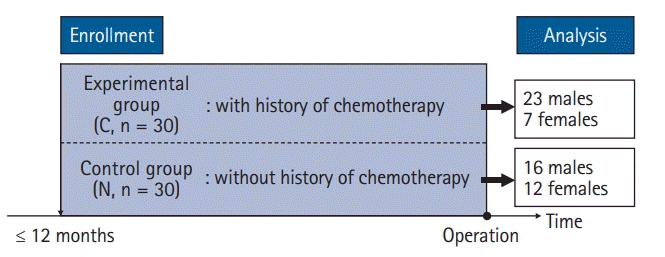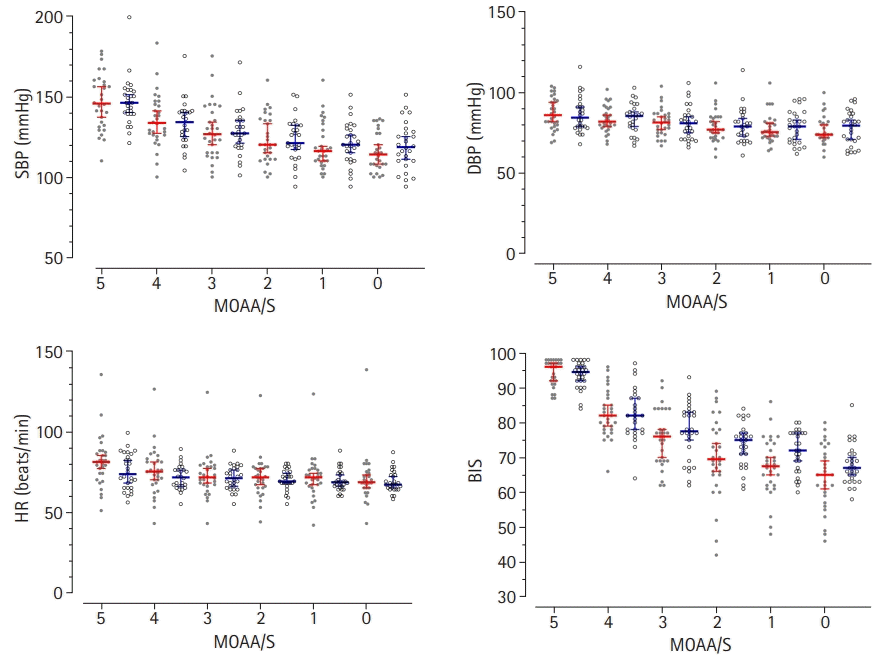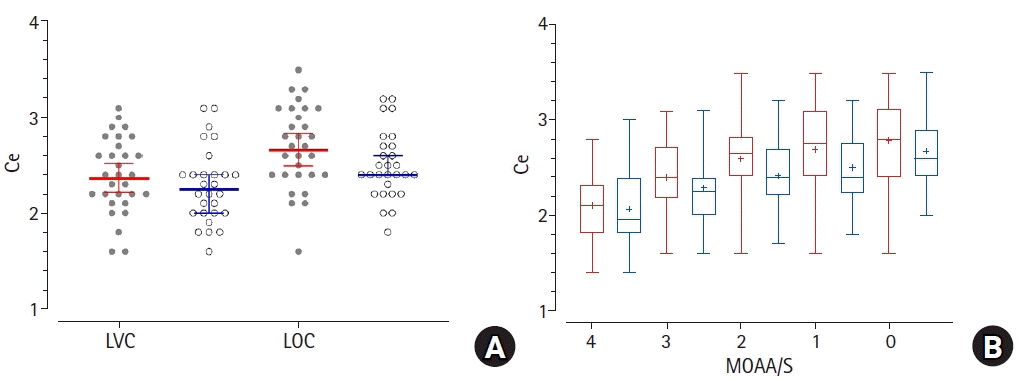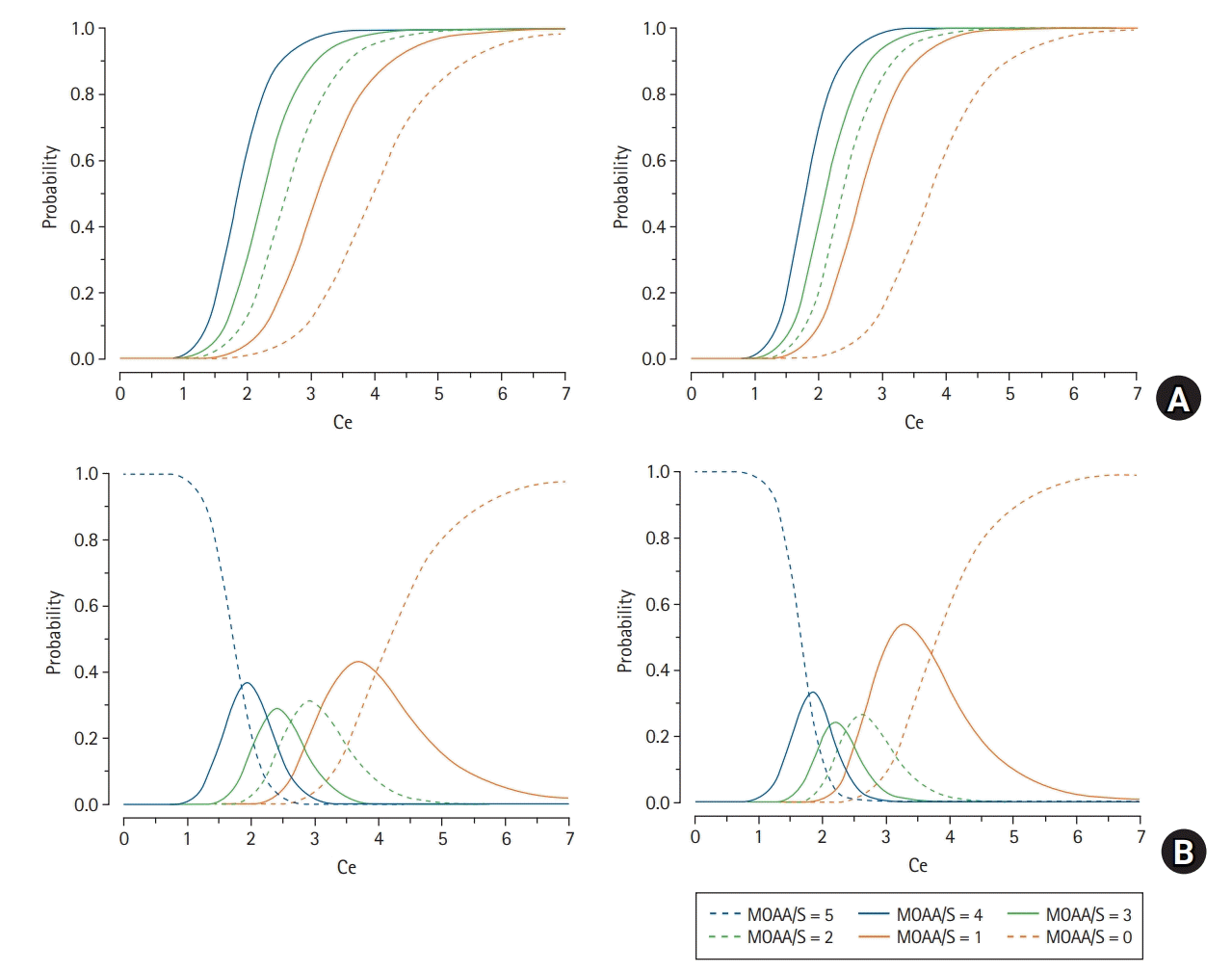1. Bray F, Ferlay J, Soerjomataram I, Siegel RL, Torre LA, Jemal A. Global cancer statistics 2018: GLOBOCAN estimates of incidence and mortality worldwide for 36 cancers in 185 countries. CA Cancer J Clin. 2018; 68:394–424.

2. Wolpin BM, Meyerhardt JA, Mamon HJ, Mayer RJ. Adjuvant treatment of colorectal cancer. CA Cancer J Clin. 2007; 57:168–85.

3. Taillibert S, Le Rhun E, Chamberlain MC. Chemotherapy-related neurotoxicity. Curr Neurol Neurosci Rep. 2016; 16:81.

4. Sioka C, Kyritsis AP. Central and peripheral nervous system toxicity of common chemotherapeutic agents. Cancer Chemother Pharmacol. 2009; 63:761–7.

5. Stone JB, DeAngelis LM. Cancer-treatment-induced neurotoxicity--focus on newer treatments. Nat Rev Clin Oncol. 2016; 13:92–105.

6. Du W, Li C, Wang H, Zhao A, Shen J, Yong F, et al. Effect of neoadjuvant chemotherapy on sevoflurane MAC-BAR value of patients undergoing radical stomach carcinoma surgery. Int J Clin Exp Med. 2015; 8:5649–57.
7. Wu G, Fu G, Zhang L, Zhang Z, Wang X. Effects of neoadjuvant chemotherapy on the depth of total intravenous anesthesia in patients with breast cancer undergoing unilateral modified radical mastectomy: a prospective observational study. Medicine (Baltimore). 2018; 97:e13776.
8. Goyle S, Maraveyas A. Chemotherapy for colorectal cancer. Dig Surg. 2005; 22:401–14.

9. Hong YS, Kim TW. Chemotherapy for colorectal cancer. J Korean Med Assoc. 2010; 53:582–91.

10. Cordier PY, Nau A, Ciccolini J, Oliver M, Mercier C, Lacarelle B, et al. 5-FU-induced neurotoxicity in cancer patients with profound DPD deficiency syndrome: a report of two cases. Cancer Chemother Pharmacol. 2011; 68:823–6.

11. Joseph EK, Chen X, Bogen O, Levine JD. Oxaliplatin acts on IB4-positive nociceptors to induce an oxidative stress-dependent acute painful peripheral neuropathy. J Pain. 2008; 9:463–72.

12. Peng J, Li W, Fan W, Zhou W, Zhu Y, Li X, et al. Feasibility study of a modified XELOX adjuvant chemotherapy for high-recurrence risk patients with operated stage III colon cancer. Front Pharmacol. 2020; 11:583091.

13. Petrioli R, Pascucci A, Francini E, Marsili S, Sciandivasci A, Tassi R, et al. Neurotoxicity of FOLFOX-4 as adjuvant treatment for patients with colon and gastric cancer: a randomized study of two different schedules of oxaliplatin. Cancer Chemother Pharmacol. 2008; 61:105–11.

14. Goodman NW, Black AM, Carter JA. Some ventilatory effects of propofol as sole anaesthetic agent. Br J Anaesth. 1987; 59:1497–503.

15. Lee YS. Effects of propofol target-controlled infusion on haemodynamic and respiratory changes with regard to safety. J Int Med Res. 2004; 32:19–24.

16. Schnider TW, Minto CF, Gambus PL, Andresen C, Goodale DB, Shafer SL, et al. The influence of method of administration and covariates on the pharmacokinetics of propofol in adult volunteers. Anesthesiology. 1998; 88:1170–82.

17. Chernik DA, Gillings D, Laine H, Hendler J, Silver JM, Davidson AB, et al. Validity and reliability of the Observer’s Assessment of Alertness/Sedation Scale: study with intravenous midazolam. J Clin Psychopharmacol. 1990; 10:244–51.
18. He ZJ, Hu YH, Fan ZY. Median effective effect-site concentration of intravenous anesthetics for loss of consciousness in neoadjuvant chemotherapy patients. Chin Med J (Engl). 2011; 124:504–8.
19. Dawood S, Leyland-Jones B. Pharmacology and pharmacogenetics of chemotherapeutic agents. Cancer Invest. 2009; 27:482–8.

20. Hassan MS, Ansari J, Spooner D, Hussain SA. Chemotherapy for breast cancer (Review). Oncol Rep. 2010; 24:1121–31.

21. Cho SH. Adjuvant Chemotherapy in Colon Cancer. Korean J Med. 2012; 83:297–304.

22. Kodaka M, Johansen JW, Sebel PS. The influence of gender on loss of consciousness with sevoflurane or propofol. Anesth Analg. 2005; 101:377–81.

23. Adachi YU, Watanabe K, Higuchi H, Satoh T. The determinants of propofol induction of anesthesia dose. Anesth Analg. 2001; 92:656–61.









 PDF
PDF Citation
Citation Print
Print



 XML Download
XML Download